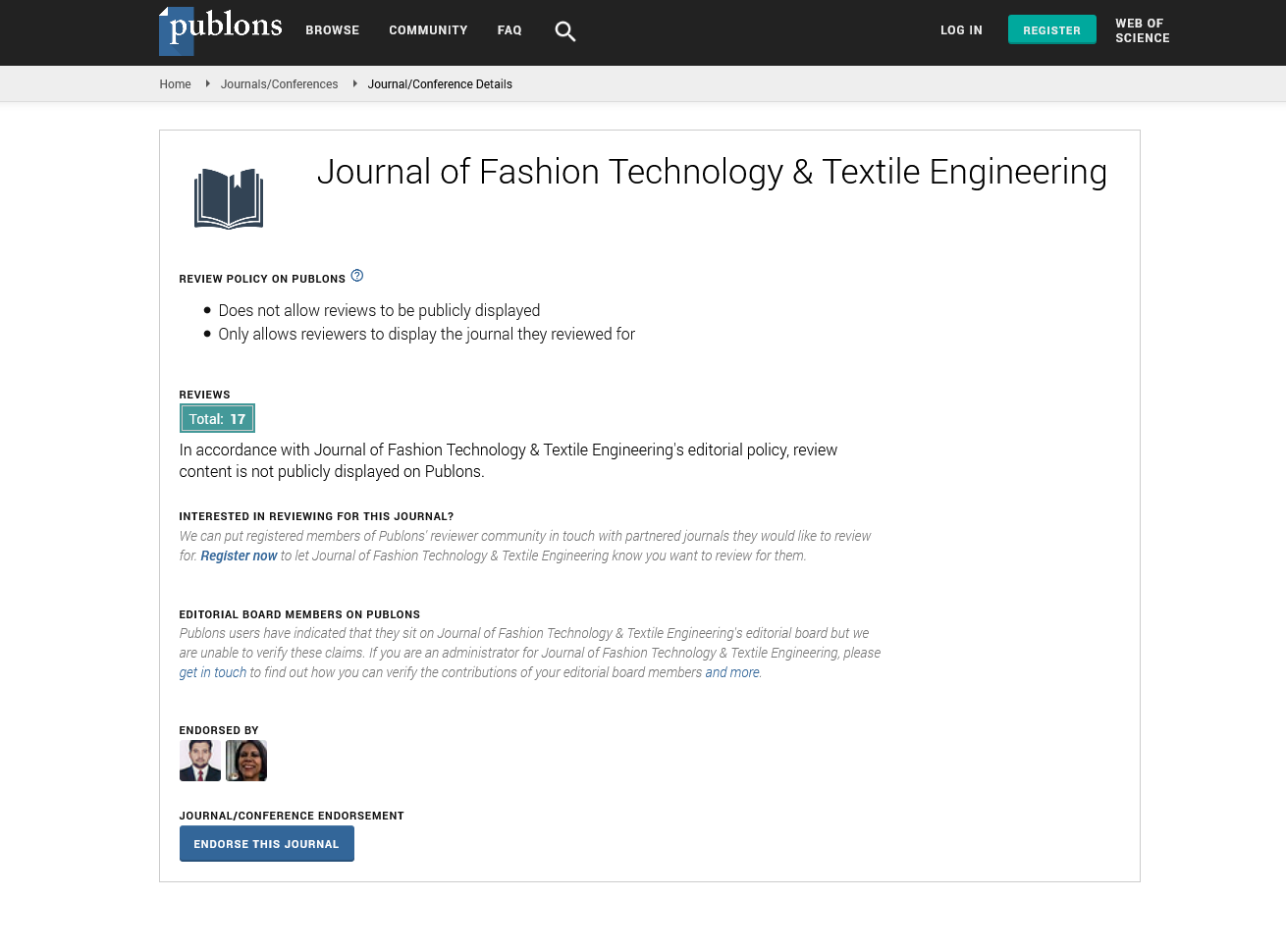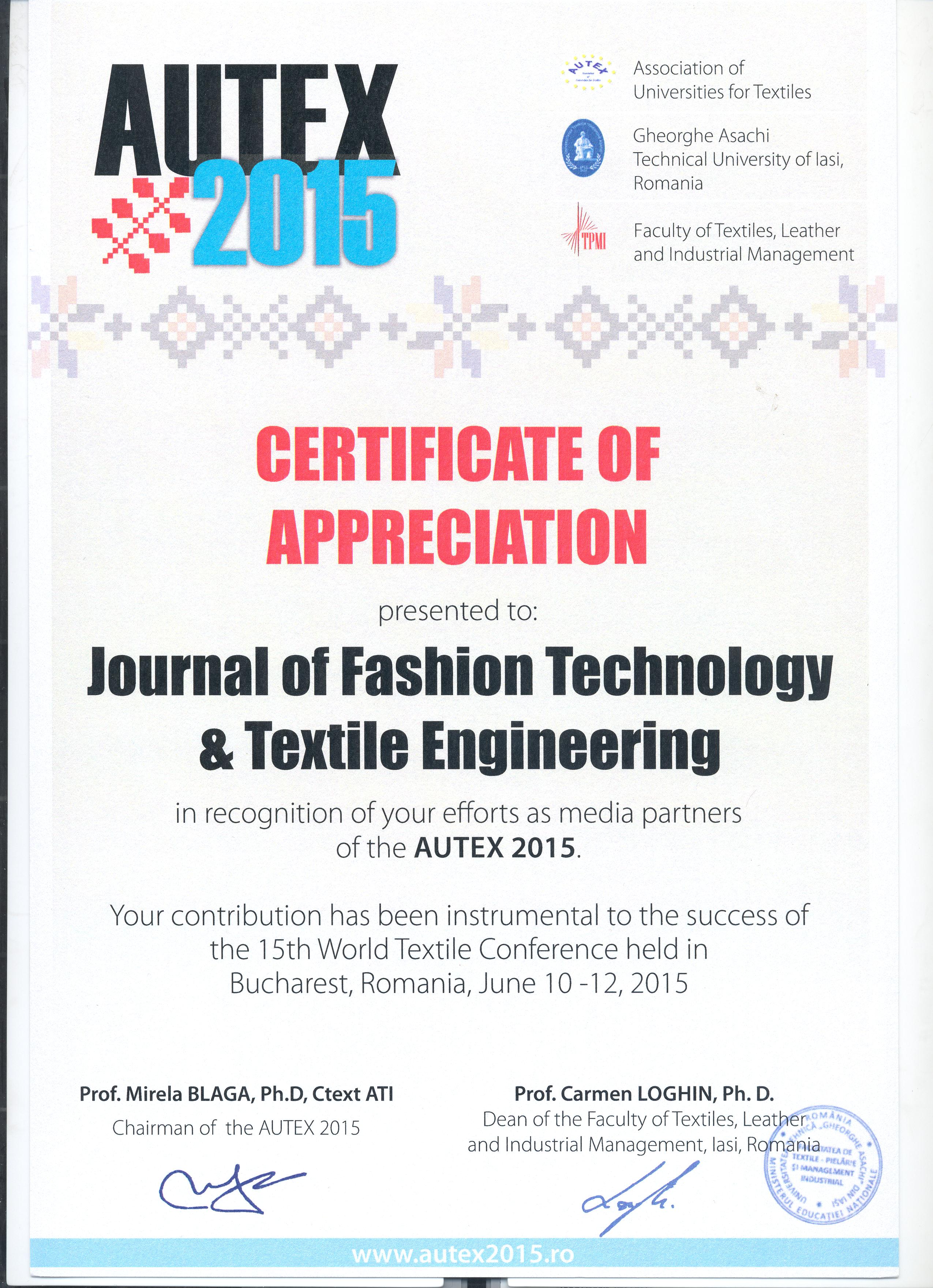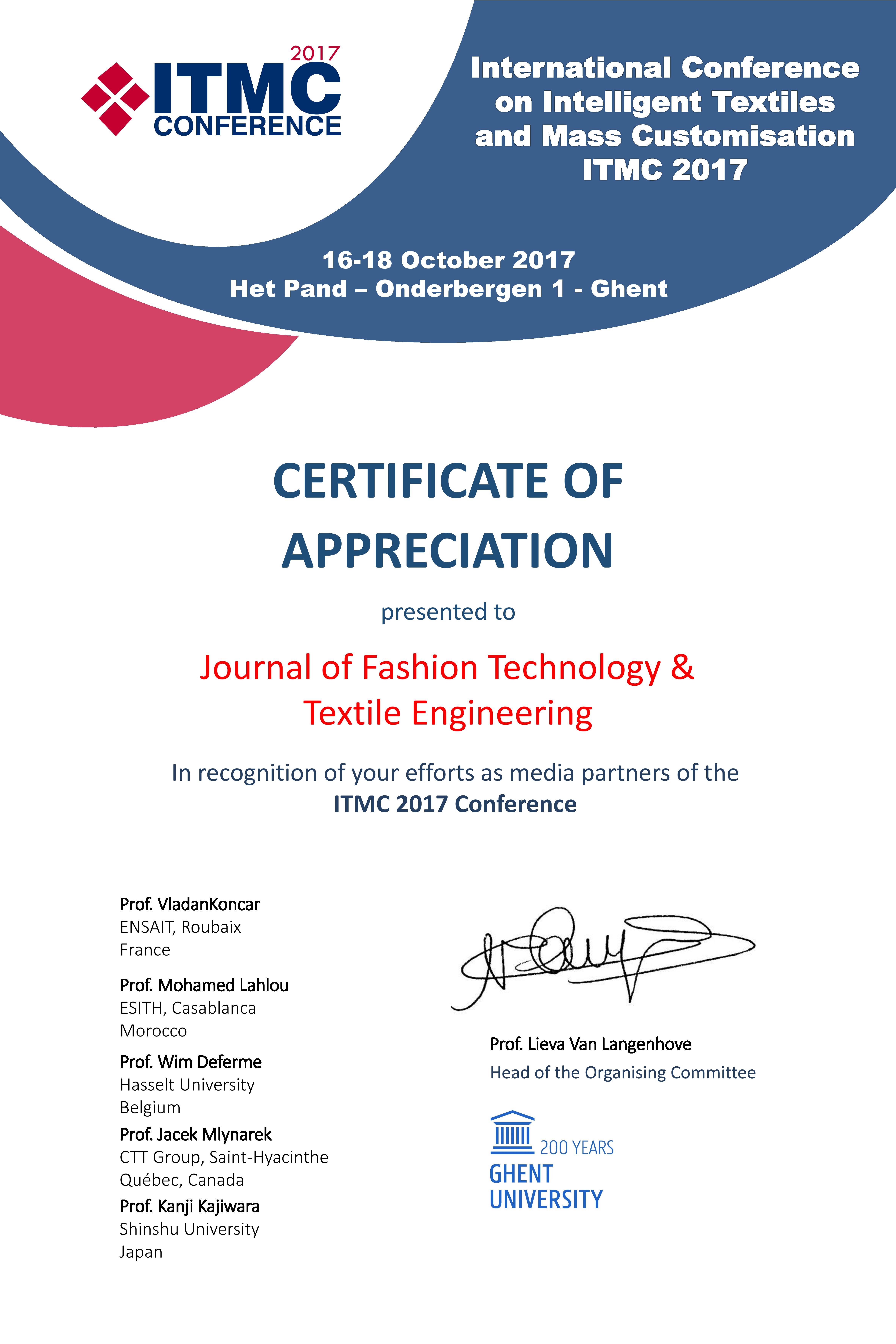Opinion Article, J Fashion Technol Textile Vol: 12 Issue: 6
Impact of Computerized Designing Techniques in the Textile Industry
Joyice Kiaul*
1Department of Fashion Technology, Bunka Gakuen University, Tokyo, Japan
*Corresponding Author: Joyice Kiaul,
Department of Fashion Technology, Bunka
Gakuen University, Tokyo, Japan
E-mail: joyice_kiaul@gmail.com
Received date: 26 November, 2024, Manuscript No. JFTTE-24-155264;
Editor assigned date: 28 November, 2024, PreQC No. JFTTE-24-155264 (PQ);
Reviewed date: 12 December, 2024, QC No. JFTTE-24-155264;
Revised date: 20 December, 2024, Manuscript No. JFTTE-24-155264 (R);
Published date: 27 December, 2024, DOI: 10.4172/2329-9568.1000386
Citation: Kiaul J (2024) Impact of Computerized Designing Techniques in the Textile Industry. J Fashion Technol Textile 12:6.
Description
The combination of computerized designing techniques in the textile industry has revolutionized the way fabrics are produced and patterns are developed. These advancements have significantly improved the efficiency and precision of textile production, leading to greater innovation and complexity in fabric design. Computerized techniques have enabled designers to impulsion the boundaries of originality while simultaneously enhancing the practicality and sustainability of textile manufacturing processes. With the increasing demand for faster production times and high-quality designs, the textile industry has embraced technology to chance these challenges and reshape traditional fabric production methods. The computerized designing in textiles is the use of software programs that allow designers to produce detailed and complex patterns digitally. These programs replace the manual processes that were once used for designing, such as hand-drawing patterns and producing physical samples.
The use of Computer-Aided Design (CAD) systems has become widespread in the textile industry, providing tools for designers to visualize their designs in a digital environment. CAD systems enable the simulation of fabric behavior, helping designers understand how the fabric will react to different processes like stretching, folding, or dyeing. This allows for more accurate predictions about how a fabric will perform in real-world applications. Additionally, these systems can generate detailed technical specifications for the production of textiles, ensuring that manufacturers can accurately reproduce the designs on a large scale. One of the most significant advantages of computerized designing techniques is the ability to produce complex and complex patterns with ease. For example, digital printing technology allows designers to print high-resolution patterns directly onto fabric, bypassing the traditional processes of screen printing or dyeing. This method enables the reproduction of highly detailed designs, including photographic images, that would be difficult or impossible to achieve using manual techniques.
In addition to improving the design process, computerized techniques have had a profound impact on textile production and manufacturing. Automated systems, including robotic machinery and digital emerges, have efficient the manufacturing process, reducing labor costs and improving speed. These systems can work with the designs produced using CAD software and automatically adjust machine settings to produce the fabric according to the designer’s specifications. This has led to faster change of times and increased production capacity, allowing textile manufacturers to meet the growing demand for custom-designed fabrics. Sustainability has also been enhanced through the use of computerized designing techniques.
Digital printing, for example, uses less water and energy compared to traditional dyeing and printing methods. Additionally, the ability to produce designs on demand reduces overproduction and minimizes waste, which is a significant concern in the textile industry. By optimizing the production process, computerized techniques help reduce the carbon footprint of textile manufacturing while maintaining high levels of design innovation and quality. The growing use of 3D modeling and printing in the textile industry is another development determined by computerized techniques. Designers can now produce 3D representations of fabric structures, allowing for more accurate visualizations.
Conclusion
In conclusion, computerized designing techniques have transformed the textile industry, enabling designers and manufacturers to achieve higher levels of precision, efficiency and creativity. From digital printing to CAD systems and 3D modeling, these technologies have redefined the possibilities of fabric design and production. As the industry continues to change, further advancements in computerized techniques will certainly continue to initiate innovation and sustainability in textile manufacturing, ensuring that the industry can produce the demands of both designers and consumers while minimizing its environmental impact. This technology is especially valuable in the development of smart textiles and wearable technology, where exact control over fabric properties is essential. For instance, 3D design techniques can help engineers and designers develop textiles with embedded sensors, conductive fibers, or other advanced features that respond to environmental changes.
 Spanish
Spanish  Chinese
Chinese  Russian
Russian  German
German  French
French  Japanese
Japanese  Portuguese
Portuguese  Hindi
Hindi 


